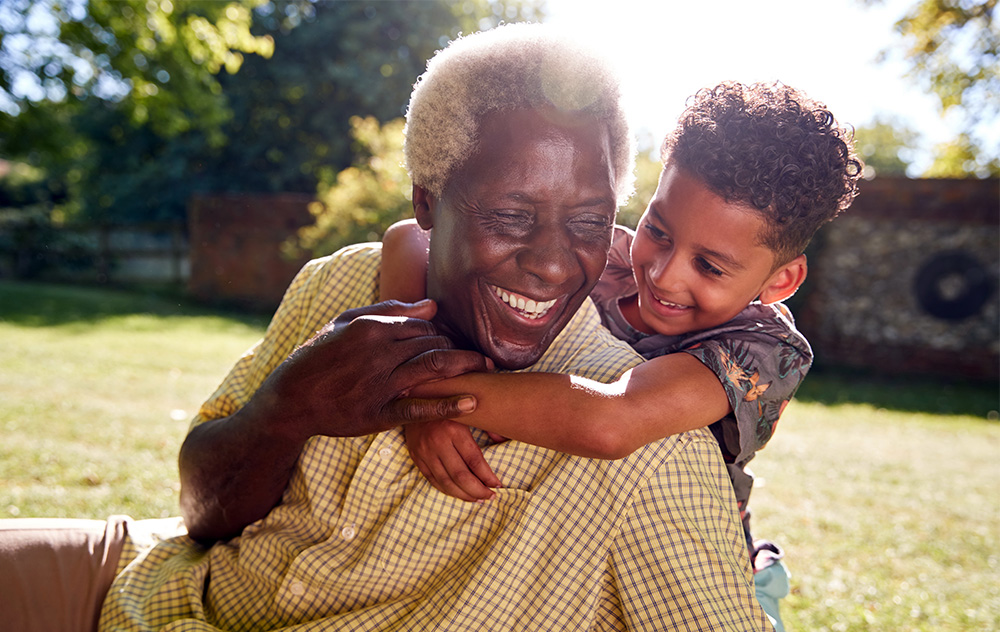Youths and Older Persons: Two Sides of the Same Coin

There are currently 1.8 billion people in the world aged 10-24. That’s roughly 23% of the total world population. At no time in history has there been more young people on the planet. There has also never been as many older persons on the planet. Around 14% of the world’s population is age 60 or over. By 2050, that number is expected to double, making the number of youths and older persons roughly the same two sides of a coin
As the world age distribution starts to look more and more like a barbell, there is danger of the two groups becoming more disconnected from each other. Even today it isn’t common for three generations of a family to live in the same town, let alone the same house. More older persons live in seniors living communities even if they don’t need nursing care. All of these factors make it harder for older and younger people to meet each other.
Youths and older persons have a lot in common
It’s easy enough for older persons to dismiss youths as loud and cocky. And younger people surely view anyone over age 60 as grumpy, know-it-alls. But if either side is willing to look more closely, they would see that they have quite a few things in common:
- Their bodies are changing and often in ways that are unwelcome and frightening. Hair sprouts in weird places. Hormones are all over the place. Nothing is the same as it used to be.
- Both groups have too many people telling them what to do. For youths it’s parents and teachers. Older persons have to deal with bossy adult children and medical professionals. Both know very well what it’s like to have someone else make decisions without them.
- Social relationships become unstable. Youths find that friends they’ve had since kindergarten can suddenly find them uncool at the drop of a hat while older persons have to deal with friends dying or moving away. Both can have plenty of people around but feel like no one really gets them.
- Both groups have a hard time finding meaningful work. Youths are immature and don’t have any experience, while older persons are too old and out of touch with the modern world. Neither group is taken seriously or considered on their own merits.
Intergenerational projects are growing in numbers
Great things can happen when older and younger persons have a chance to spend time together, and in recent years, seniors centers and other agencies have done a lot to increase this sort of interaction. The benefits for both parties are well documented. The only limit is one’s imagination. Here’s a look at three different intergenerational programs in Canada, the Netherlands and the USA.
In Saskatoon, Canada, groups of grade six students go to school at the Sherbrooke Community Centre (Sherbrooke). Sherbrooke provides specialized care for older persons. They apply the Eden Alternative where residents are partners in directing their own care. Introducing a program with young students onsite year round at a care facility is truly care innovation. The kids learn their grade six curriculum with the residents who wants to be mentors. They spend time talking and playing. Residents get to provide care and not just receive care. Both parties develop their social skills and learn new things about the wider world and also themselves.
Another intergenerational program involves children, older persons and robots. The International Child Development Initiative in the Netherlands has created a program called Together Young and Old, which connects children age 8 and under with older persons. They either meet in person through daycare visits or school group outings, or they meet virtually, as in a community reading pilot where an older person read a story to a child remotely with the help of a robot!
Young people interested in design can compete in the Stanford Center on Longevity Design Challenge. The catch is that in order to win, they must have someone from another generation on their team. Both of the recent winners had older persons on their teams. One team developed a card game that breaks down barriers between generations. The other team developed an easy to use app to help families capture and share stories via high quality audio recording.
Youths and older persons spending time together is good for body and mind
Most projects designed to encourage younger and older persons to interaction with each other are fun. But they are also hugely beneficial for all participants physically, socially and emotionally. Being able to talk to adults who are not their parents important for youths. Even if the older persons are giving the same advice as the parents, the relationship dynamics means the message is perceived differently. This gives older person an unique opportunity to be a low-pressure mentor.
Feeling misunderstood and forgotten is common for both younger and older persons. Left unattended, these feelings can lead to depression and anger. When a person feels like they have a purpose and are of use to others, their mental and physical health improves.
An older person’s cognitive abilities improve when they learn a new joke or what slang the kids are using these days. Youths benefit from developing critical thinking skills and how to talk to people with different life experiences. When youths spend time around older persons, they are far less likely to have ageist points of view. The young people of today are the leaders and policy makers of tomorrow. Since the number of older persons is set to explode around the world, helping youths and older persons spend time together just makes sense.

